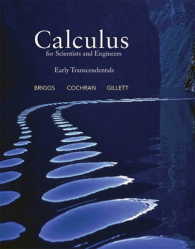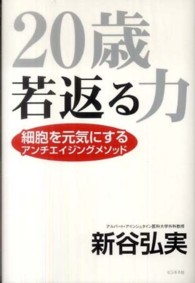- ホーム
- > 洋書
- > 英文書
- > Architecture
Full Description
This book is an experiment on constructing a text starting — exclusively and strictly — from the materials of an architectural project. As in an archive, it contains all the documents produced by the design team, which become the only sources of a text that allows the reader to generalise the project's contents and reflect on its process. An extensive masterplan is transforming the abandoned industrial area of Shougang, on the outskirts of Beijing, into one of the venues for the 2022 Winter Olympics Games. Within this process, the China Room, as a research centre of the Politecnico di Torino dedicated to urbanisation and architecture in China, was involved by Tsinghua University in the transformation of the former oxygen factory into a visitor centre, working on industrial memory as a lever for a renovation of the existing aimed at the overall sustainability of the masterplan.
The book overviews and analyses the most important steps that transformed initial design intentions into a defined proposal, passing through different solutions, changes, debates, and negotiations among the different stakeholders called into action along the whole process.
Telling the story of this architectural project means thinking about the ways of designing across different contexts in the global market. More particularly, the story is about the skills and experiences that Academia puts in place by addressing real transformation projects through research, with respect to professional practice modalities. In addition, the book is intended to make design practicing transparent to the reader, capable to move around the genesis of the project following the many trajectories occurred along the whole process, similarly to an open archive: retrospectively the final image of the building will incorporate architectural elements brought by socio-technical decisions, enlarging the spectrum of design agency from single authorship to a larger collective of involved stakeholders.
Among the project documents, a recurring drawing guided the project exchange between the Politecnico and Tsinghua teams during the two years of joint design work. The cross-section of the factory was the point of comparison about the relationship with the structural skeleton of the original factory and the vertical organisation of the project: from the public playground on the ground floor to the intensive exploitation of the intermediate levels, to the roof that seeks new relationships with the competition area and the natural landscape.








